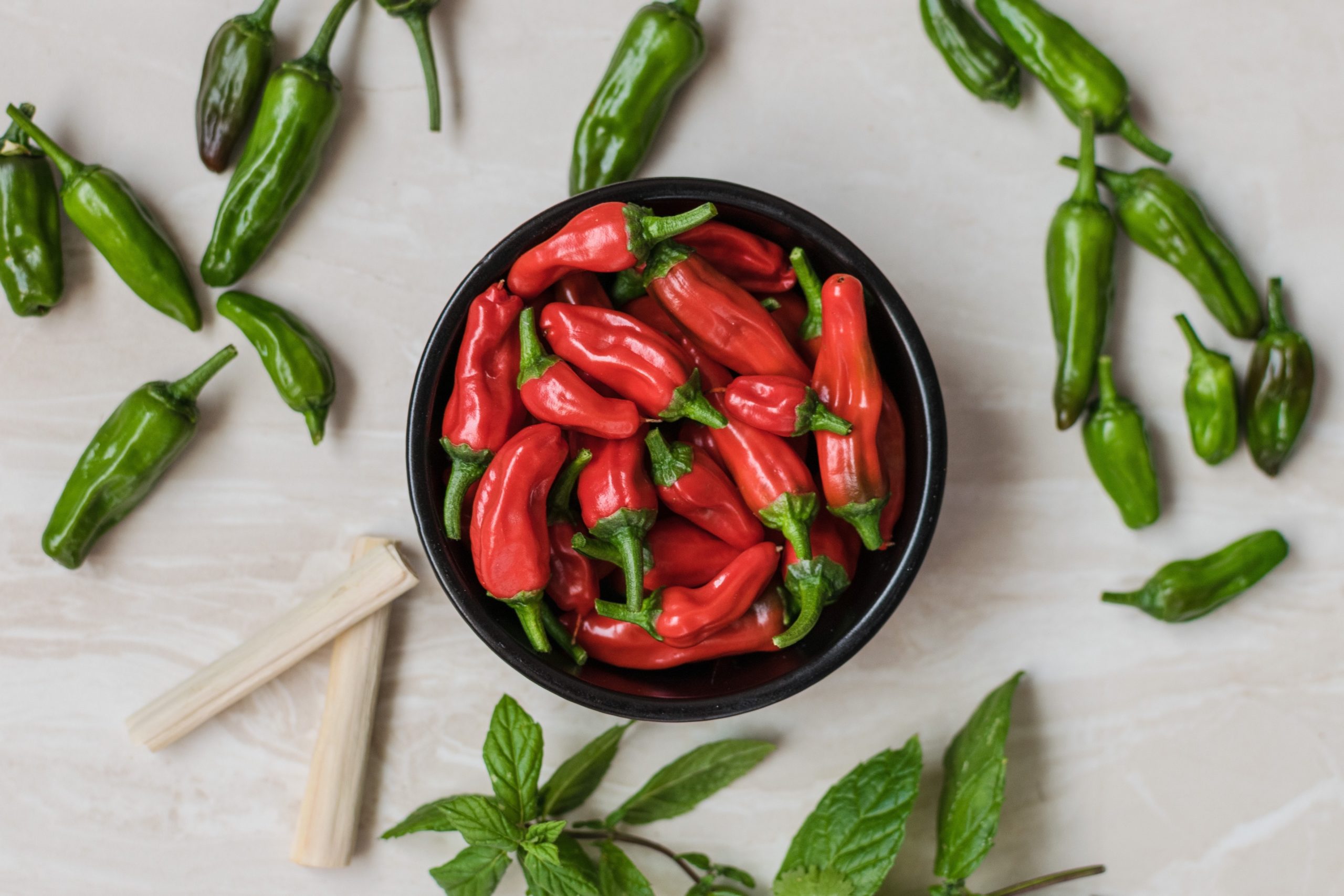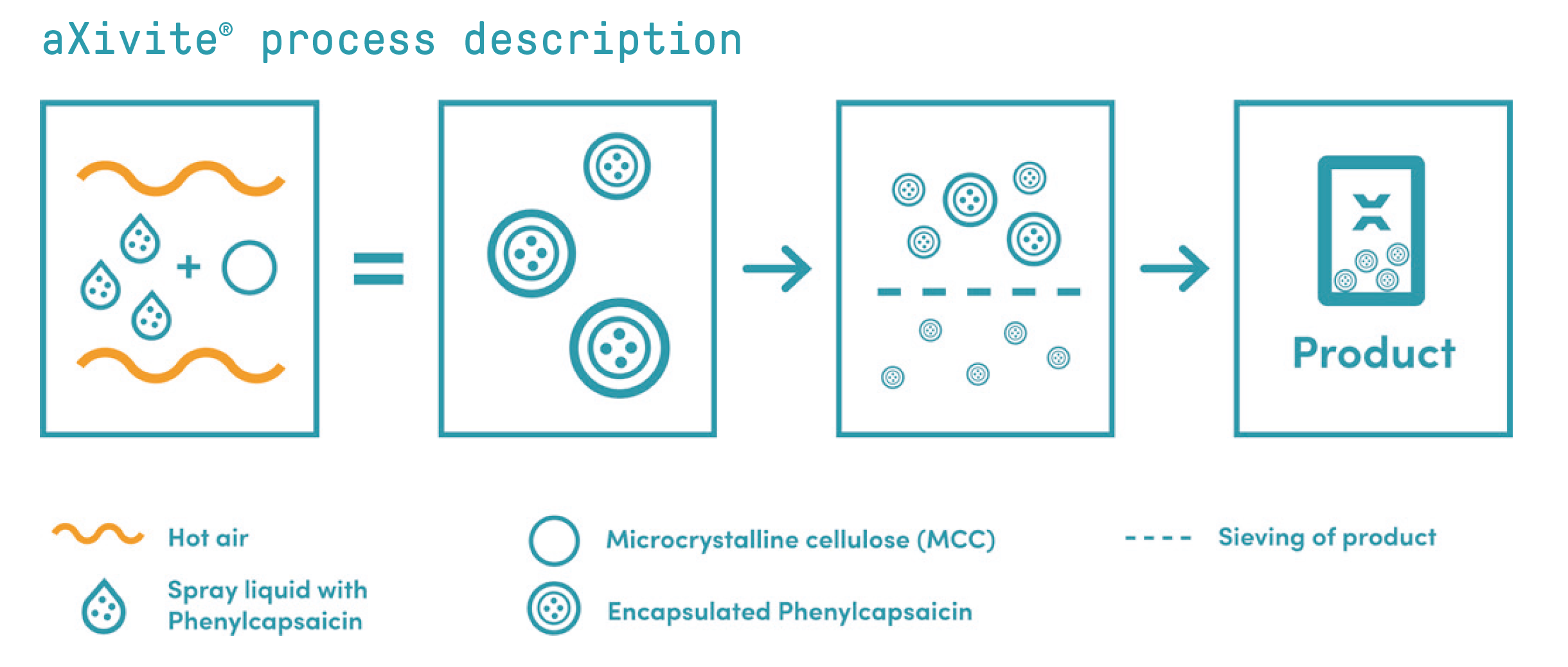Our science
We draw from the genius of nature and respect nature in return
Based on Science close to Nature
The health benefits of chili, with its active ingredient capsaicin have been known for centuries. But chili is also known for being hot and not so easily consumed. aXichem’s phenylcapsaicin combines the naturally occurring phenyl group with capsaicin, bridged by a triple bond. The result is in an innovative natural analogue capsaicin with high purity, where the pungency is greatly reduced.

Background
More than a decade ago, during a trip to China, one visit went to a manufacturer specialised in extracting colours from chili fruits using a very advanced technology – super critical fluid extraction. As a side product, capsaicin was extracted. Capsaicin is the bioactive compound in chili fruits, and it is the pungent ingredient that gives chili it’s spiciness. Going back from China, a question was raised: how can capsaicin extract be used?
We started to investigate the application areas for capsaicin and found a few hundred thousand of scientific studies from the 9th century and onwards. The positive health benefits covered areas from hypertension and obesity to diabetes and pain management.
Chili is quite hard to cultivate and sensitive to climate conditions, making only small quantities available in the market. It is also difficult to derive pure capsaicin since the separation process is complicated. As a result, the concentration is low, and the content of impurities is high in the extracts. This also leads to difficulty in standardizing the product formula in end products since the capsaicin differs in quality.
To overcome these limitations the idea formed to develop an analogue. After years in the lab and patent work, phenylcapsaicin saw the light of the day, an analogue that control the purity, the impurities, the stability, the solubility, and that could be upscaled in production. The story of aXivite started!
The science revolution – TRPV1
The science revolution with capsaicin really started with the discovery of the TRPV1, the vanilloid receptor also known as the capsaicin receptor and when the channel was finally identified in 1997. TRPV1 is unique in that its excitation by agonists is followed by a lasting effect (or refractory state.) Stimulation of the intestinal mucosal capsaicin-sensitive afferent nerves by capsaicin, produced a significant vasoconstriction in adipose tissue. These findings identify TRPV1 as an attractive target for generally analgesic anti-inflammatory application both in pharma and now in dietary supplements.

The innovative Phenylcapsaicin
A new proprietary analogue of Capsaicin
aXivite is based on an innovative molecule «Phenyl-capsaicin» which is an analogue to capsaicin. Phenylcapsaicin is a proprietary molecule where a naturally occurring phenyl group has been used to stabilize nature identical capsaicin. It introduced a triple bond within the phenyl group that offers several benefits compared to its naturally occurring analogue.
Zoomed down to a molecular level, aXivite showed similar bioactivity as a TRPV1 – agonist as natural capsaicin in several studies. The biologic effect of aXivite is activating the TRPV1 receptor and use it as a non-selective cation channel enabling specific compounds to react under certain heat and acidic conditions. The structural similarities and differences lead to an improved potent product with very interesting properties

Microencapsulation
Phenylcapsaicin activates the capsaicin receptor, the origin of the pungent hot feeling in chili, which is not always desirable. To control the pungency, aXichem has developed a unique microencapsulation, engineered for specific release resulting in the formulation of aXivite. The product is packaged in an easy to handle formulation with low percentage of the active compound for commercializing purposes.
Benefits of microencapsulation:
- Lower pungency
- Dosage versatility
- Better compliance
- Allergen free
- Suitable for vegans
Suitable for:
- Tablet compressing
- Filling capsules

1) The core material microcrystalline cellulose (MCC) particles is fluidized by hot air.
2) A spray liquid containing Phenylcapsaicin is sprayed onto the MCC. The hot air dries the particles resulting in encapsulated Phenylcapsaicin on MCC particles.
3) Oversized particles are sieved and removed.
4) Particles are packaged into ready product.
